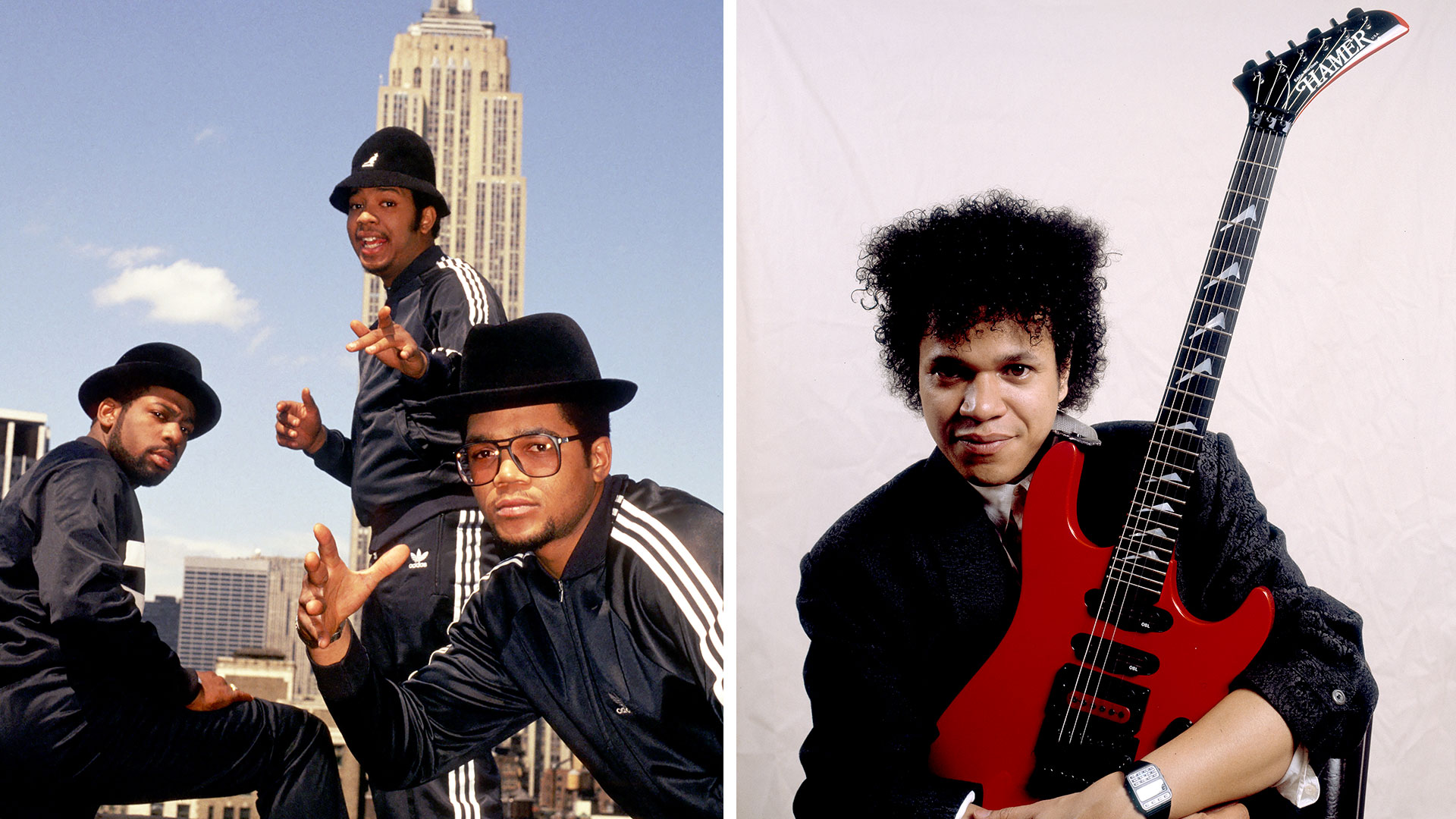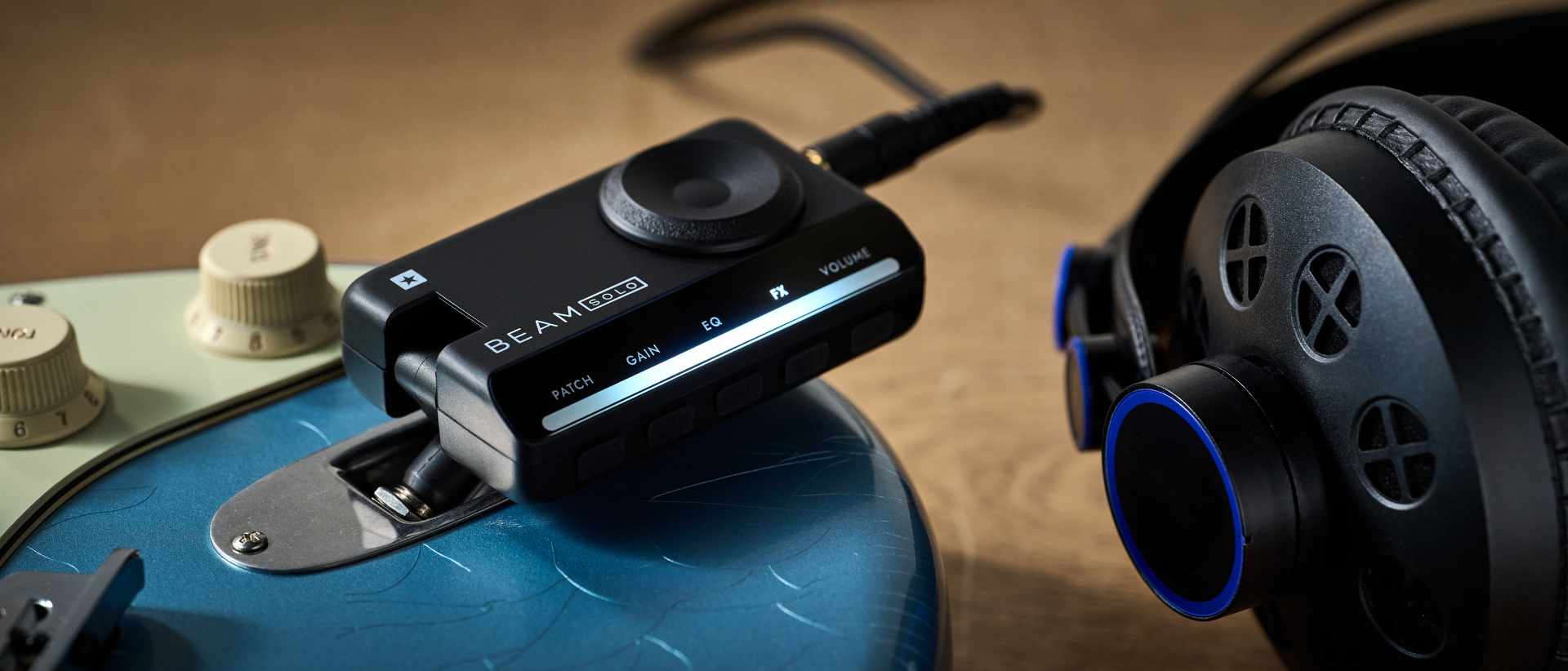“The only gear I brought was a red Hamer prototype. That guitar is magical. I used it on Robert Palmer’s Addicted to Love, David Lee Roth’s California Girls and with Mick Jagger”: Eddie Martinez explains how he helped Run-D.M.C. bring rock to hip hop
Armed with his legendary red Hamer, Martinez stepped into one of the most iconoclastic collaborations of the '80s as Run-D.M.C. became the first hip-hop act to bring the crunch of electric guitar into the rap game

Before hooking up with Run-D.M.C., New York City session veteran Eddie Martinez had made his rounds with Blondie, Robert Palmer, Mick Jagger and David Lee Roth (and let’s not forget his contributions to Run-D.M.C.’s self-titled 1984 debut). Still, he says that lending his licks to a hip-hop album, which became King of Rock, was a different animal.
“Big ‘rock’ guitar wasn’t associated with rap prior to me playing on Rock Box and King of Rock,” Martinez says. “But Larry Smith, who wrote and produced those classics, knew I could get the sounds and vibe because I’d played in rock and punk bands when we were kids.”
Martinez suggests that despite the genre shift, his approach didn’t shift all that much. “My objective was to bring authentic, big, crunchy guitars to the beats,” he says. “It required finding the right sounds and approaching the songs with attitude and intention that translated to ‘feel.’”
Also helpful was the fact that the members of Run-D.M.C. – Joseph “Run” Simmons, Darryl “D.M.C.” McDaniels and Jason “Jam Master Jay” Mizell (the latter of whom was apparently most receptive) – trusted Martinez after fulfilling their rap-meets-rock vision on their 1984 debut.
“After the success of [Run-D.M.C.’s 1984 hit] Rock Box, they readily accepted that blending the two genres was explosive, special and most importantly, what the people wanted,” Martinez says.
Yes, the people wanted it – as did Martinez and Run-D.M.C. – but making it happen was another thing. It took a specific blend of oh-so-Eighties gear and a Midas touch.
“The only gear I brought was a red Hamer prototype,” Martinez says. “That guitar is magical. It powered several big hits. I used it on Robert Palmer’s Addicted to Love, David Lee Roth’s California Girls and Mick Jagger’s She’s the Boss album. With that, I used a Sound City 100-watt head.
All the latest guitar news, interviews, lessons, reviews, deals and more, direct to your inbox!
“I used that head instead of the Music Man 2x12 combo I used for Rock Box. In those days, studios provided the amps, which generally was a double drag because studios’ amps were generally on their last gasps.
“But I was lucky; that amp provided the goods I needed. I also used my yellow Boss OD-1 [overdrive pedal]; it gave me just the correct bump into the front end of the amp and the crunch I needed.”
Despite the rock-tinged success Run-D.M.C. experienced with Rock Box, Martinez says producers Smith and Russell Simmons were “instrumental in imploring Run-D.M.C. and Jam Master Jay that pairing rock and rap was the way to reach broader success.”
Still, no one had done it before Martinez; Run-D.M.C. made it a reality.
“The reason rock and rap paired so well is because of the space there is on those tracks,” he says. “It was a blank canvas for me to get really large sounds to fill the space. It was a perfect match. It was a great metaphor for trashing the norms heretofore.”
In the 40 years since, rock and rap have been joined at the hip, which is just one of many things that Martinez takes pride in when it comes to King of Rock.
“I thought the tracks rocked, but I never thought they would have such cultural significance,” he says. “One of the immutable laws of marketing is that it’s better to be first than better. We were first with blistering big guitars on rap. Kudos to Run-D.M.C. for putting their dope vibe on these tracks. King of Rock and Rock Box were the first to break a tradition and were true hybrids. The fact that this has given so much meaning to fans is something I will always remain grateful for.”
- This article first appeared in Guitar World. Subscribe and save.
Andrew Daly is an iced-coffee-addicted, oddball Telecaster-playing, alfredo pasta-loving journalist from Long Island, NY, who, in addition to being a contributing writer for Guitar World, scribes for Bass Player, Guitar Player, Guitarist, and MusicRadar. Andrew has interviewed favorites like Ace Frehley, Johnny Marr, Vito Bratta, Bruce Kulick, Joe Perry, Brad Whitford, Tom Morello, Rich Robinson, and Paul Stanley, while his all-time favorite (rhythm player), Keith Richards, continues to elude him.
You must confirm your public display name before commenting
Please logout and then login again, you will then be prompted to enter your display name.



